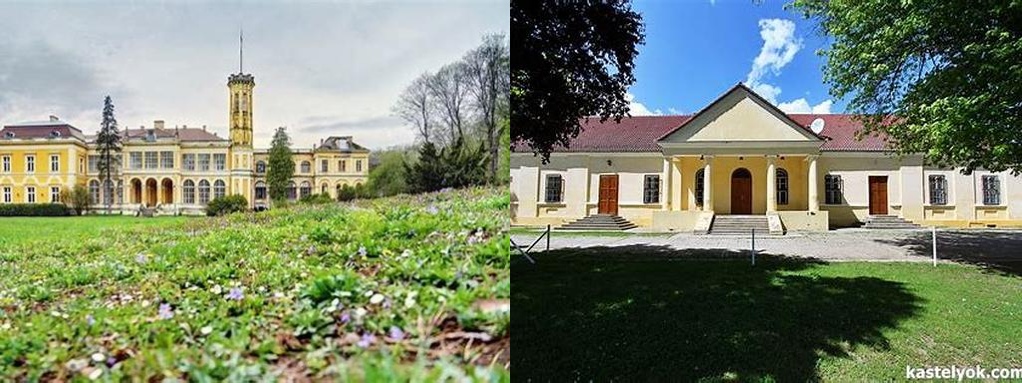
Károlyi-kastély in Beregsurány is the kind of place that sneaks up on you. Tucked away in Hungary’s far eastern reaches, on the edge of the Great Plain where the country leans over toward Ukraine, it has a kind of quiet, stately bearing. It’s not the most famous castle in Hungary—those tend to cluster around Lake Balaton or pop up majestically in Budapest’s skyline—but honestly, that’s part of the charm. You have to intend to get here. But it’s worth the intention. The castle, or stately “kastély,” has stories folded into its walls that evoke both the grandeur and peculiarities of Central European history, served up amid grounds that feel as lived-in as they do grand.
The story of Károlyi-kastély is bound up, unsurprisingly, with the Károlyi family, a formidable old Hungarian noble house. The exact origins of the manor are a bit fuzzy—always the mark of a truly lived-in European residence—but most sources point to the early 19th century as its earliest incarnation. This is when the modest estate began its transformation into the neo-classical residence you see today, all pale facades and maintained dignity. There’s a kind of genteel melancholy about it, knowing that for generations, Károlyis shaped not only the region’s fortunes but played major roles on the stage of Hungarian (and even European) politics. In fact, it’s hard not to picture Count Mihály Károlyi, the one-time Prime Minister and briefly President of Hungary after World War I, as he walked these halls—perhaps deep in thought, as momentous decisions circled.
The castle itself is—let’s be honest—more of a manor than a fortified stone fortress. But what it loses in battlements it makes up for in atmosphere. Walking up the drive, you can catch the way the neo-classical portico sits, drawing the eye toward the central hall. There’s elegance, for sure, but also a sense of comfort, or humility. Inside, the rooms retain their high ceilings, with some decorative stoves, eye-catching mirrors, and the rakish hint of faded wallpapers that somehow survived generations of shifting fortunes. For several decades, particularly during the era of Communism, the building was used for various practical, less-romantic purposes—school, office space, sadly a fate common to so many Hungarian noble houses. That’s part of its strange appeal now: these walls have seen splendor and scarcity alike, and they wear both lightly.
The real jewel, however, may well be the park. Vast, well-tended, and shaded by centuries-old trees, the grounds are more than just the castle’s backdrop. These old trees—the oaks, chestnuts, perhaps a linden or two—cast the kind of deep, dappled shade that calls out for walking, lingering, and even forget-the-modern-world daydreaming. On a slow afternoon, you might be the only visitor, just you and the castle, with nothing to do but listen to the wind shuffle the leaves. It’s easy to imagine the parties and starlit evenings that must have unfolded here in the late 1800s, when the Károlyi family played host to the upper echelons of Hungarian society.
Beregsurány, the village that cradles the castle, has a curious and quiet appeal itself. Don’t expect crowds or noisy boulevards—this is rural Hungary at its most atmospheric. The nearby Reformed Church, with its wooden bell tower, stands as a whispered reminder that these lands have absorbed wave after wave of history, yet somehow persist with their own rhythm. Wandering the village before or after a castle visit feels like flipping through a family photo album filled with moments of triumph, turbulence, and daily endurance.
Perhaps what’s most fascinating about Károlyi-kastély is the sense of ongoing life. This isn’t a sterile museum, nor is it a forgotten ruin: it’s a place with past and present entwined. Restoration efforts are ongoing, grassroots projects pop up here, and if you’re lucky, your visit might coincide with a small local event—an exhibition, a concert, or an open-air festival on the grass. There are stories threaded through every step, sometimes hinted at in worn floorboards, sometimes overtly recited by volunteers with generational connections to the manor. You get fragments, impressions—enough to fill an afternoon, or enough to lure you back for a second visit.
So, if your journeys ever tilt east, if you’re curious about the lived experience of Hungary’s noble past (with all its tangled, beautiful, tragic and resilient threads), make the time for the detour to Beregsurány and let Károlyi-kastély tug at your sense of wonder. Pack a book, bring a picnic, or just your capacity for noticing the quiet details. You won’t be disappointed.





